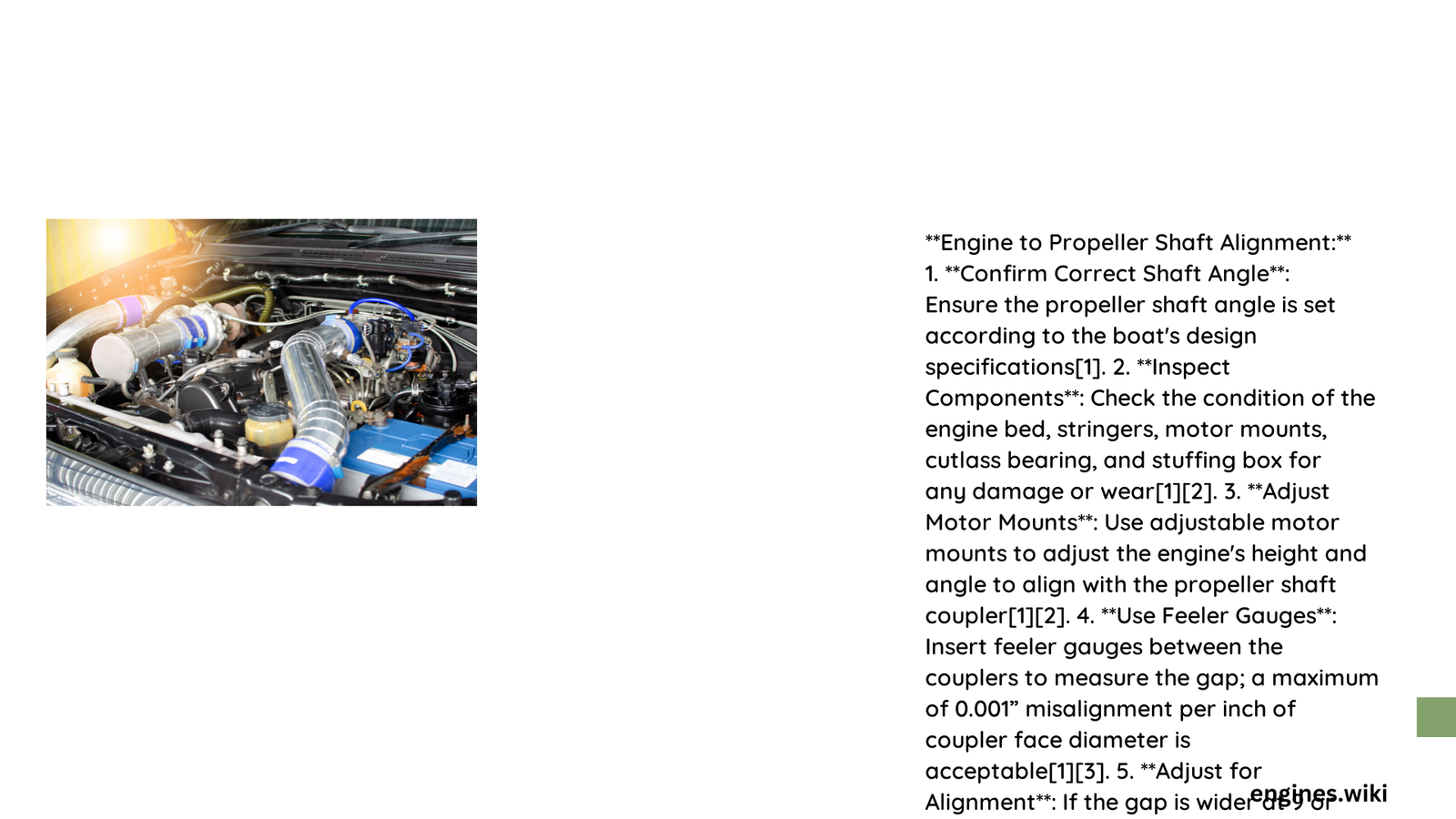Engine to propeller shaft alignment represents a critical precision engineering process that ensures optimal power transmission, minimizes mechanical wear, and prevents catastrophic equipment failure in marine propulsion systems. Precise alignment involves complex measurements, advanced technological tools, and meticulous adjustment techniques that demand comprehensive understanding of mechanical tolerances and structural dynamics.
What Makes Shaft Alignment Critical?
Shaft alignment is fundamental to marine vessel performance, directly impacting:
- Mechanical Efficiency: Reduces energy losses during power transmission
- Equipment Longevity: Minimizes premature bearing and coupling wear
- Operational Reliability: Prevents unexpected mechanical breakdowns
- Vibration Reduction: Ensures smooth power transfer between engine and propeller
How Do Precise Measurements Determine Alignment Success?

Tolerance Specifications
| Measurement Type | Acceptable Tolerance Range |
|---|---|
| Gap and Sag | ±0.05 mm to ±0.10 mm |
| Flange Face Tolerance | 0.001″ per shaft diameter inch |
| Misalignment Tolerance | 0.030 mm per 25 mm flange diameter |
Key Measurement Techniques
Professionals utilize advanced measurement techniques including:
- Laser Alignment Systems
- High-precision optical measurement
- Digital data processing
-
Real-time error detection
-
Optical Telescopic Methods
- Establishes precise reference lines
- Measures minute displacement variations
- Provides sub-millimeter accuracy
What Tools Ensure Accurate Shaft Alignment?
Essential equipment for precise alignment includes:
- Digital laser alignment systems
- Precision optical telescopes
- Feeler gauges
- Strain measurement devices
- Micrometers with high-resolution capabilities
What Are Common Misalignment Symptoms?
Recognizing misalignment early prevents significant mechanical damage:
- Vibration Indicators
- Rotational frequency vibrations
- Increased noise levels
-
Irregular bearing wear patterns
-
Performance Signals
- Reduced power transmission efficiency
- Unexpected temperature increases
- Unusual mechanical resistance
How Should Alignment Procedures Be Conducted?
Step-by-Step Alignment Process
- Initial Reference Measurements
- Document propeller shaft baseline position
-
Establish comprehensive measurement references
-
Gap and Sag Evaluation
- Measure intermediate shaft flange relationships
-
Compare against established tolerance ranges
-
Bearing Load Assessment
- Use strain gauge measurements
- Implement shaft jacking techniques
-
Verify load distribution uniformity
-
Fine-Tuning Adjustments
- Modify bearing heights
- Compensate for potential hull deflections
- Verify alignment through repeated measurements
What Challenges Might Emerge During Alignment?
Potential complications include:
- Complex hull structural dynamics
- Temperature-induced dimensional variations
- Manufacturing tolerance inconsistencies
- Environmental operational constraints
Recommended Best Practices
- Utilize advanced laser alignment technologies
- Conduct regular precision checks
- Train technical personnel in sophisticated measurement techniques
- Document and track alignment history
Conclusion
Successful engine to propeller shaft alignment demands technical expertise, sophisticated measurement tools, and meticulous attention to precision engineering principles. By understanding complex alignment dynamics, marine engineers can ensure optimal vessel performance and extended equipment lifecycle.
